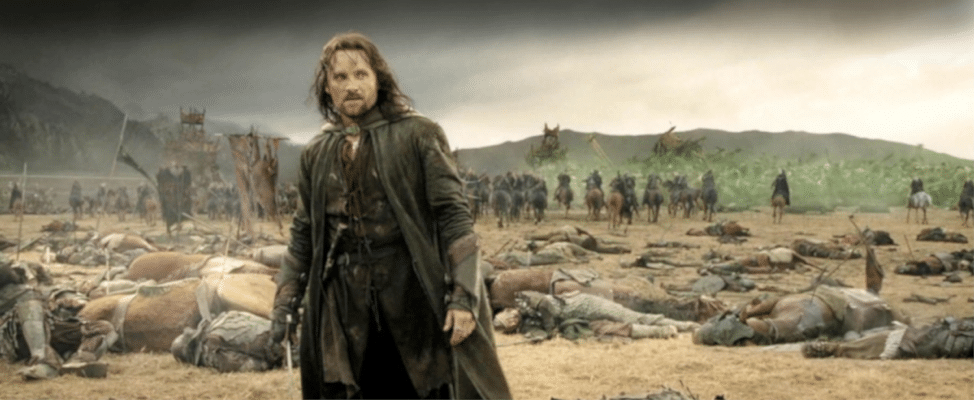The Lord of the Rings: The Return of the King – A Majestic Finale to an Epic Trilogy
The Lord of the Rings: The Return of the King is the third and final installment of Peter Jackson’s groundbreaking adaptation of J.R.R. Tolkien’s epic fantasy saga. Released in 2003, the film is a cinematic triumph — a sweeping, emotional, and visually stunning conclusion to a trilogy that redefined modern fantasy filmmaking. Winning 11 Academy Awards, including Best Picture and Best Director, The Return of the King remains a monumental achievement in storytelling, technical craft, and emotional depth.
The film picks up where The Two Towers left off, with Middle-earth on the brink of war. Sauron, the Dark Lord, prepares his forces to launch a final assault on Gondor and the free peoples of the world. At the heart of the story is the perilous journey of Frodo Baggins (Elijah Wood) and Samwise Gamgee (Sean Astin), who inch closer to Mount Doom with the One Ring — the ultimate weapon of evil — growing heavier and more corruptive with every step. They are trailed by the duplicitous Gollum (Andy Serkis), whose torn psyche remains one of the most tragic elements of the story.

Meanwhile, Aragorn (Viggo Mortensen) must accept his true identity as the heir to the throne of Gondor and rise as a leader of men. Alongside him are Legolas (Orlando Bloom), Gimli (John Rhys-Davies), and Gandalf the White (Ian McKellen), all playing crucial roles in uniting the scattered armies of Middle-earth. The stakes escalate rapidly as the Battle of Pelennor Fields unfolds — one of the most breathtaking and intense battle sequences in cinematic history, complete with siege towers, winged Nazgûl, and the awe-inspiring charge of the Rohirrim.
What sets The Return of the King apart is not only its scale but its emotional resonance. The film explores themes of courage, friendship, sacrifice, and the burden of destiny. The bond between Frodo and Sam, in particular, is the emotional heart of the narrative. Sean Astin’s portrayal of Sam reaches heroic levels, embodying loyalty and hope in the face of overwhelming darkness. His line, “I can’t carry it for you, but I can carry you,” is one of the most memorable moments in the trilogy.
The film’s final act, which many noted for its multiple endings, takes the time to fully honor the journey each character has undergone. It does not rush to resolution but instead allows the story to breathe — to mourn, to heal, and to say goodbye. The emotional weight of Frodo’s departure from the Shire is both tragic and beautiful, a reminder that some wounds never truly heal.

Technically, the film is a marvel. From its Oscar-winning visual effects, makeup, and production design, to Howard Shore’s soaring score, every element contributes to an immersive and unforgettable experience. The design of Minas Tirith, the monstrous Oliphaunts, and the haunting Dead Marshes showcase Weta Workshop’s creative brilliance.
The Return of the King is more than a movie — it is the conclusion to one of the greatest cinematic journeys ever undertaken. It brought Tolkien’s legendary world to life with passion, reverence, and grandeur. As the end of a trilogy, it delivers both emotionally and thematically, reminding audiences why stories of hope, heroism, and fellowship endure through time.
In every sense, The Return of the King earns its place as a towering masterpiece in the history of film.


